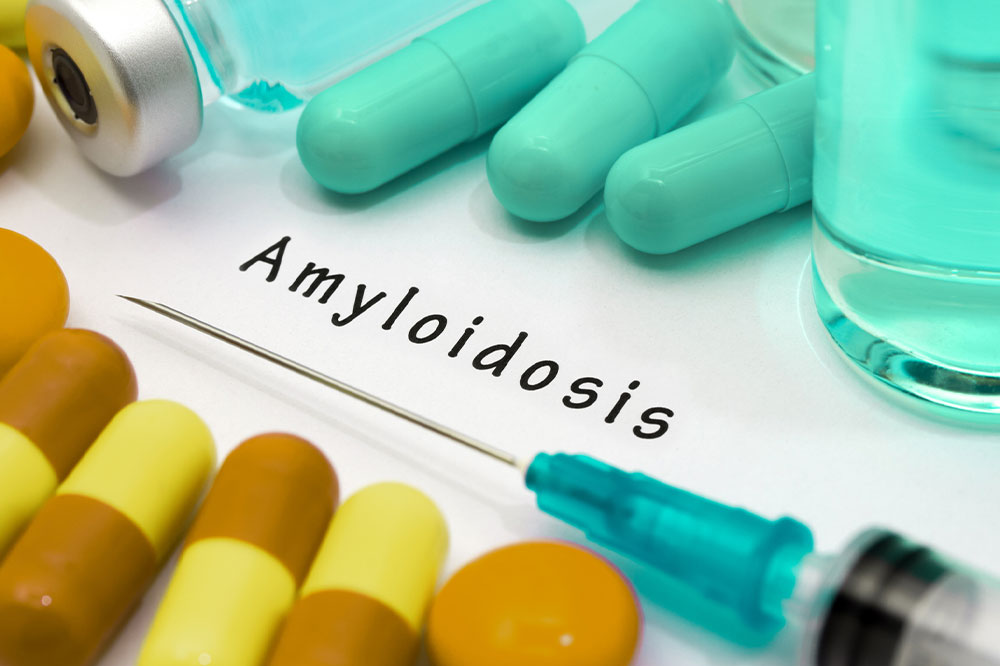
Amyloidosis – types, symptoms, diagnosis, and treatment
Amyloidosis causes an abnormal protein called amyloid to accumulate in the organs and tissues of the body and interfere with its normal functioning. One of the main effects of this condition that has been observed is the change in the shape of the organs due to amyloid build-up. This condition is generally deemed serious as it can lead to organ failure if not detected and treated in time. Read to know more about amyloidosis.
What causes amyloidosis?
This ailment falls in the category of rare diseases and there are several types of amyloidosis. Different types of proteins could be responsible for amyloid deposits but only some of them can lead to serious health issues. The type of amyloidosis is determined by the type of protein accumulated and also the area in which it collects.
Types of Amyloidosis
AL amyloidosis
This is probably one of the most common forms of amyloidosis detected in patients. This particular disorder is related to plasma cells; which are a type of white blood cells in charge of producing antibodies or immunoglobulin. The amyloid build-up in tissues in this type is referred to as light chains and the most affected organs due to this buildup are the kidneys, the gastrointestinal system, heart, and nerves. The AL in the name of this condition is short for amyloid and light chain.
AA amyloidosis
Another common names for this type are inflammatory amyloidosis and autoimmune amyloidosis. The protein buildup in this type is called A protein and is often linked with chronic ailments such as diabetes, tuberculosis, and inflammatory bowel disease. This type of protein buildup targets organs such as the kidneys, liver, spleen, and adrenal glands.
Familial or hereditary amyloidosis
This is a rare phenomenon. As the name suggests this kind can be passed on from one generation to another over time and cause issues with the heart along with other abnormalities.
Possible symptoms of amyloidosis
There is no known cure for this rare disorder; however, it symptoms can be managed. Some of the general symptoms associated with amyloidosis are mentioned below.
Shortness of breath
When the amyloid buildup targets the lungs or the heart, then one of the common signs is shortness of breath while performing activities such as walking long distances without stopping or climbing a flight of stairs.
Swollen legs and changes in urine
When the protein buildup is around the kidneys, then one of the common symptoms is the elimination of protein from the blood via the urine. This further leads to swelling in the feet, ankles, and calves.
Fatigue
Doing even small chores can seem difficult for people dealing with amyloidosis and severe fatigue is one of the signs associated with this ailment.
Unintentional weight loss
Yet another sign to look out for is losing weight without intention. Some people might also notice a loss of appetite.
Enlarged tongue
The protein buildup can cause enlarged tongue. Some other muscles like the shoulder muscles, resulting in their enlargement.
Difficulty in swallowing
Experiencing discomfort while swallowing food is also a sign of amyloid buildup.
Diagnosis of amyloidosis
People who experience few or most of the above-mentioned symptoms are advised to consult a doctor for a thorough physical examination to determine the problem. There are certain urine and blood tests that can help in determining whether there is protein buildup in the body. A biopsy can also be performed to determine and confirm the type of protein that is accumulating in the body.
Treatment for amyloidosis
No absolute cure is available for amyloidosis. Medical professionals prescribe several treatments to slow down the buildup of amyloid protein and manage its symptoms. In some cases, amyloidosis could be an indicator or symptom of another underlying ailment. In these cases, the line of treatment alters as per the underlying cause. The type of treatment also depends on the type of amyloidosis. The organs affected also play a vital role in deciding the treatment option.
Amyloidosis is a rare disease and can be controlled when detected on time. It is essential to take good care of the body by indulging in ample physical activity and eating healthily. Besides being observant and attentive towards the symptoms, it is also important to avail of treatment as soon as possible.




